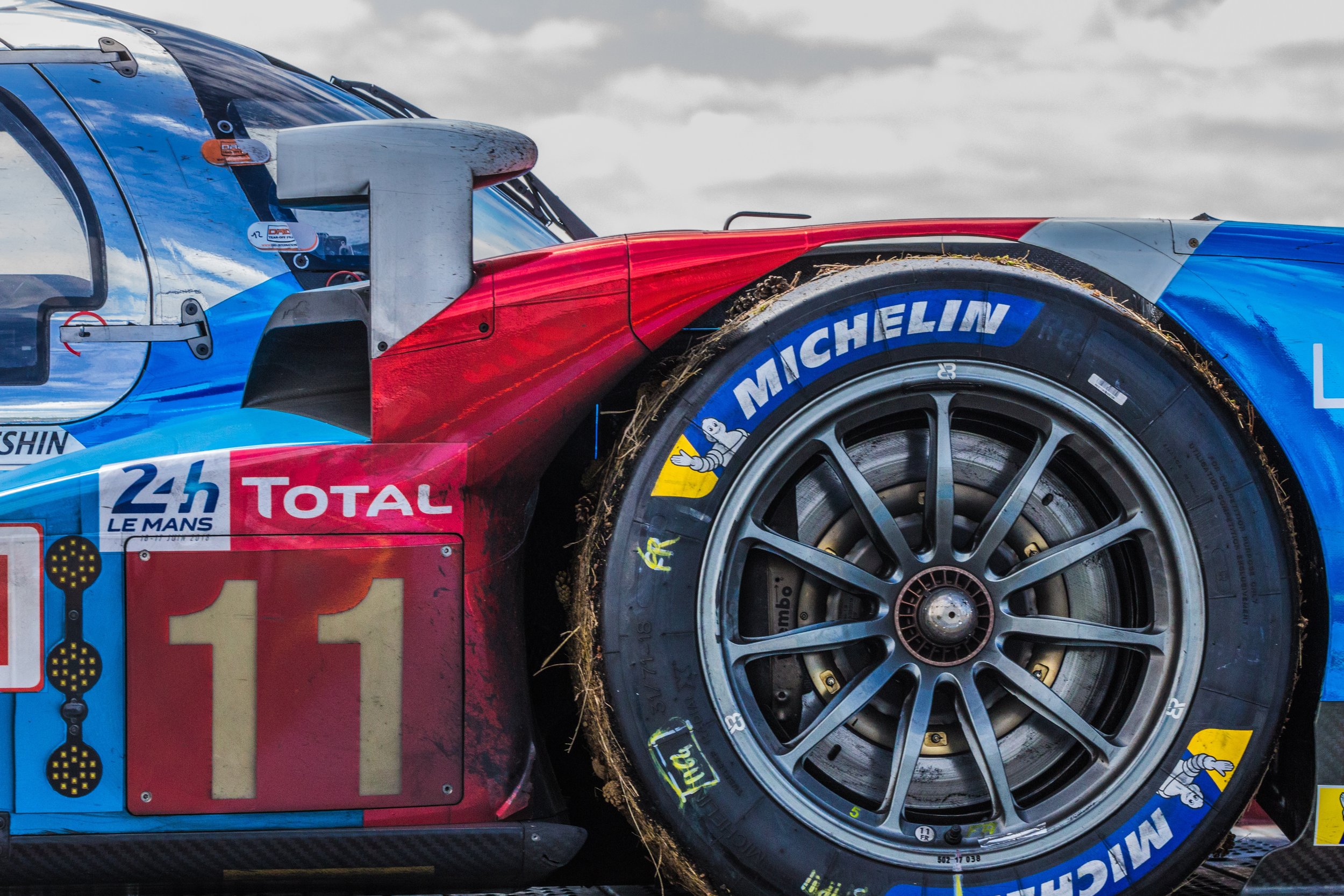And Then You Win Le Mans
Do you know what Le Mans is? If you said it’s a Steve McQueen film, you’d be absolutely correct (and would also have good taste in movies). If you said it’s a town in France, you’d be right again. But, if you said it’s the location of one of motorsport’s most arduous races, you’d be hitting the nail on the head where this post is concerned.
In a little town in France, that is not covered in vines (or it might be in places- it is rather old), lies one of the racing worlds most prestigious tracks- the Circuit de la Sarthe. The most notable race that happens here is the 24 Hours of Le Mans, known as Le Mans.
As the name suggests, 24 Hours of Le Mans is a race that lasts a full 24 hours, covering over 3,000 miles. Just to put that in perspective, as the crow flies, from coast to coast, the United States is 2,680 miles wide. Suffice it to say, Le Mans is long.
Unlike other motorsports, such as Formula One, where teams focus their efforts to produce the fastest car on track, Le Mans focuses on reliability and endurance. In fact, it’s affectionately termed the Grand Prix of Endurance and Efficiency. As a competitor in 24 Hours at Le Mans, a team wants to produce a sporty car that is fast as well as reliable, meaning they want minimal to no mechanical difficulties or failures for the duration of the race. If you’ve ever watched a F1 race, teams are constantly switching out parts throughout the whole race weekend in order to achieve optimal performance for the 2-hour grand prix. With that in mind, Le Mans is most definitely a horse of a different color.
That’s the technical stuff. Then there are the drivers. Each car has 3 drivers who switch out for stints during the race. Due to the cars’ high speed and the strain it puts on the drivers, the FIA has rigid time regulations to reduce driver fatigue. Regardless, this race of endurance is just that for the drivers. Not only must they endeavor to maximize output to achieve consistent and gaining speeds throughout the race, but they must know how to economize on their expendables, such as tires, brakes, and fuel. Couple those continual analytics with all the G-force they withstand for such an extended time, and these drivers are truly tested in the arenas of fortitude, strength, and resilience.
This year at Le Mans something awesome happened. But, before I get into that, let me back track a tad and segue way to Formula One. To McLaren specifically, and their driver, Fernando Alonso, precisely.
Fernando Alonso is a two time world champion. When he hit the track for Renault in 2003, he rocketed. He finished his rookie year 6th in the points, followed by 4th the next year. In 2005 and 2006, he was world champion, the youngest to hold the title until Vettel took it in 2008. When Michael Schumacher retired in 2006 after a dominating career in the sport, the track seemed wide open for Fernando to race to the lead. He definitely had the determination, talent, and passion to be on par with Schumacher.
However, his tale has been one of woe rather than wow. All the driving ability within him has been honed. He’s one of the best. Some would say he IS the best, and have good ground for that. But he’s been held back because he hasn’t had competitive cars- whether with Ferrari or McLaren. Where he can more than perform for the win, his cars can’t. If you want proof of his exceptional ability, take a look at Ferrari’s performance in 2012 and 2013: in spite of sub-optimal cars, Alonso proved to be a top-notch driver, landing Ferrari 2nd in the points through sheer grit and determination. Tenacity. Charisma. Passion. Never say die. These are attributes I’ve come to associate with Fernando Alonso.
Each year, he’s brought his A game to the track and each year, he’s been disappointed race after race. Last year’s season still hurts. However, through the disappointments, the losses, the doubts, Alonso has remained committed to motorsports and loyal to his team.
Not that it’s been easy for him. Like he said in F1 Racing:
“To be honest with you, it has not been easy. There have been ups and downs, highs and lows… I had to push myself a little bit more to stay focused and to stay in the game. I don’t like losing— I like winning, in anything I do in life.”
And since winning with McLaren hasn’t panned out as expected, Fernando has gone further afield. He’s sought out new ways to challenge himself within his sport.
Last year, he opted out of the Monaco Grand Prix- which he’s won; twice- in order to participate in the Indianapolis 500.
This year, Alonso has embarked on another stretch; he’s entered the World Endurance Championship.
This year, I have the chance thanks to McLaren to race for the win at Le Mans. It is a big challenge – much can go wrong – but I am ready, prepared and looking forward to the fight.
While he’s upholding his commitment to McLaren F1 team, he’s also undertaking the taxing challenge of endurance racing. Yeah, he’s doing both at the same time. Rather than have a bi-week rest between the Azerbaijan and Spanish GPs, Alonso raced in the 6-Hours of Spa-Francochamps in Belgium.
He won there.
Then rather than take the week off between the Canadian GP and the triple header of French, Austrian, and British GPs weekend to weekend, Alonso raced in the 24 Hours of Le Mans.
He won there, too.
I think KIMOA says it best:
“We have the best as a brand ambassador, Fernando Alonso, who represents and shares our values better than anyone: to dare to discover and experience, to dream, to never give up, to be authentic and to achieve unattainable goals.”
Watching him over the last several years has been quite the inspiration. You see, he could have retired. There would have been no shame in it. He is a 2X World Champion. And he has other prospects to pursue- most recent, his fashion lifestyle brand, KIMOA. But Alonso couldn’t do that. It’s not in his blood to surrender, and retiring when he believes he has more to accomplish would amount to giving up in his book.
So, what did he do when the one track he’d been on wasn’t giving him the results he wanted to see?
He found another track.
Not only does winning Le Mans showcase Alonso’s never surrender attitude, it’s also another step to another track: The Triple Crown of Motorsports. The Triple Crown is a cross sectional of prestigious races: Formula One’s Monaco Grand Prix, Indy Car’s Indianapolis 500, and World Endurance Championship’s 24 Hours at Le Mons. Only one man has ever achieved it; Graham Hill in 1972.
Only 19 drivers have ever tried their hand at the Triple Crown. One of them is Fernando. He’s won the Monaco Grand Prix. Twice. Now he’s won Le Mans. He’s driven at the Indy 500 (leading it until his engine failed). AND he has two world championships. If he can master the Indy 500 (and I know he will), he will take the Triple Crown and deserved every tine on that crown.
Winning Le Mans is a fitting victory for Fernando. It’s a testimony. In the face of defeat after defeat with no light at the end of the tunnel, he drove. When he didn’t have the internal drive, he drove. When he wanted to give up, he drove. That behavior screams endurance and consistency and reliability. And it deserves the win. And isn’t that what Le Mans is all about?
Like David when he faced Goliath, Fernando Alonso won his Le Mans long before he got in his LMP1 class Toyota TS050 Hybrid. It seems he’s taken St. Paul’s exhortation to heart:
“Let us run with patient endurance and steady and active persistence the appointed course of the race that is set before us.”
May we all endeavor to follow in his race tracks.


































